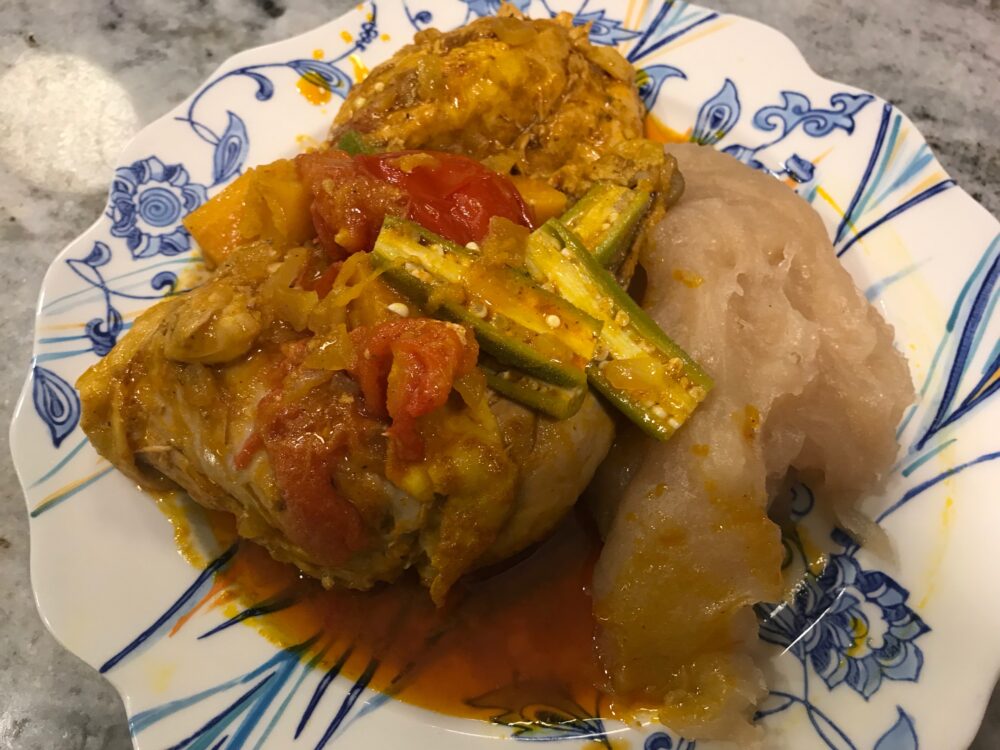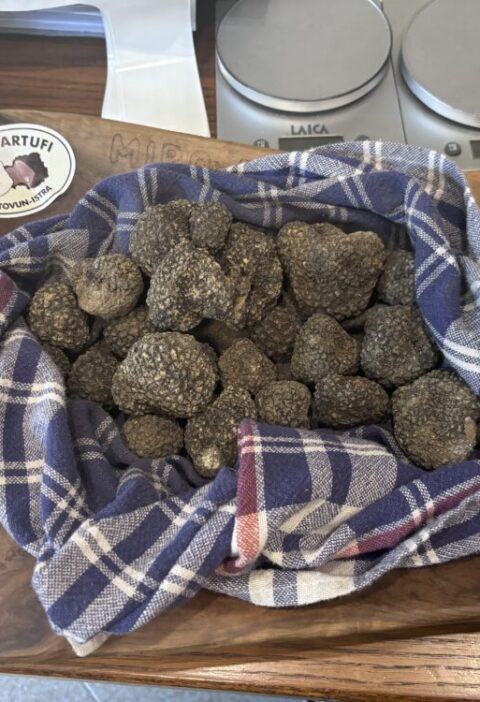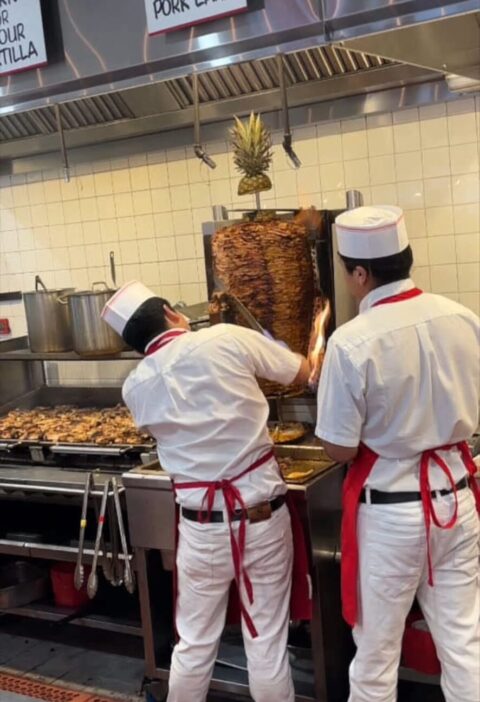One of the things I miss most about dining out in New York City is the adventures I would take to neighborhoods and communities that were very unfamiliar to me. For this at home journey, if I want to be as authentic as possible, I’m going to also have to seek out special ingredients at markets that are not on my usual shopping path. And that is incredibly exciting.
Thankfully, I discovered a West African market not too far from my apartment and so I was able to use the most authentic ingredients possible for this week’s unique dish.
We’re heading to southwestern Africa to the very large country of Angola. While there is still a lot of poverty, it is one of the wealthiest countries in Africa (that wealth, as you can imagine, is hugely uneven) and the capital of Luanda is one of the most expensive cities in the world for expats.
THE CUISINE
You can’t talk about the cuisine of Angola without talking about Portugal and to some extent Brazil. Just like Brazil, Angola was a Portuguese colony. But they didn’t gain their independence until much later – 1975 to be exact. And so the cuisine of Angola is very much still connected to that of Portugal.
You can see this influence in its heavy use of olive oil and its many spicy fish stews.
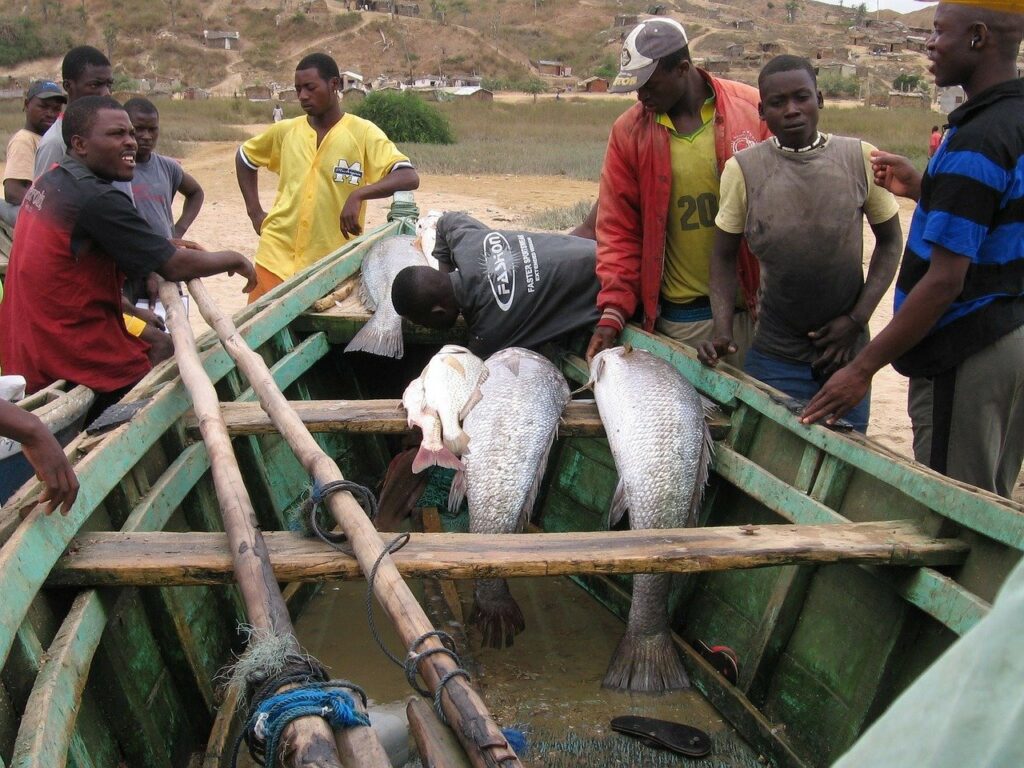
Of course, another player in the influence of Angolan cuisine is its geography and landscape. Situated along the Atlantic Ocean, fish (both fresh and dried) is prevalent. In addition, pork, chicken, and insects (especially caterpillars) are the main proteins.
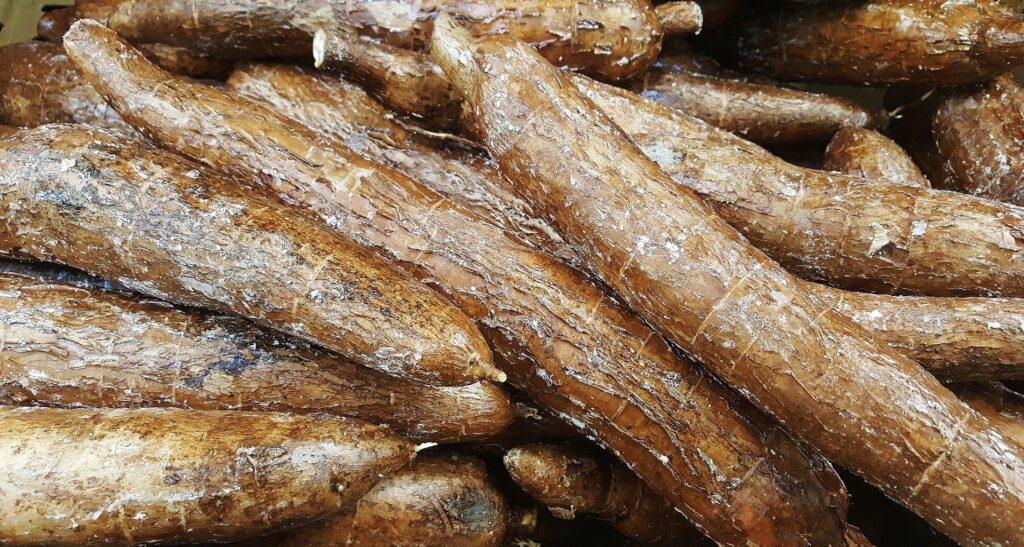
You’ll also find plenty of starchy ingredients in the form of rice, beans, peanuts, and cassava, which is the main ingredient in one of the most important and popular dishes in Angola, funje. And more hearty vegetables like okra, pumpkin, and gumbo (similar to spinach) are usually mixed into the stews.
And probably thanks to Portugal and Brazil, they also like it hot here in Angola. Garlic and chile peppers (piri piri or jindungo), pop up in most dishes.
The food of Angola is bold and flavorful and I’m excited to get cooking.
ANGOLAN FOOD IN NEW YORK
We hit another road block with Angola when searching for restaurants in New York City. You can sometimes find Angolan food at African festivals and food markets. But as far as I can tell, there is no dedicated restaurant to this cuisine.
The closest we can probably get is to try similar ingredients at Brazilian or Portuguese restaurants. For instance, the menus at Casa and Berimbau, both in the West Village, have many of the same food words as Angola’s wikipedia page (of course, that’s partly because the countries share a language).
THE VIDEO
I put Sam to work on this episode. Funje requires a lot of dedicated whisking and I wanted to test out his stamina. The kid is in good shape!
This episode also features our first taste test when it comes to an ingredient neither of us have ever had. Don’t miss when Sam and I both try Palm Nut Concentrate for the first time. It’s an adventure.
THE DISH
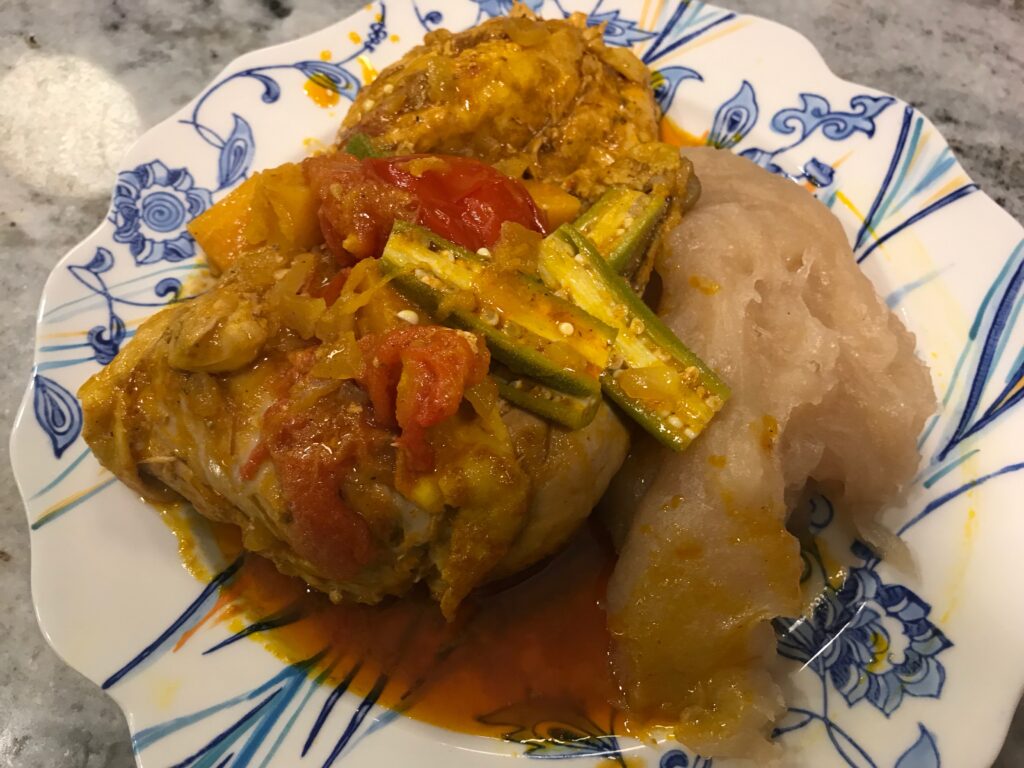
So for the first time on this journey, we will be technically making two dishes. Both are considered the National Dish of Angola and it doesn’t make sense to make one without the other.
Muamba de Galinha essentially means Chicken with Muamba sauce. You can also find this sauce (slightly altered) with fish. It’s also not exclusive to Angola, but appears in other Central African cuisines. The big difference is Angola’s version does not include any peanuts but rather palm nut butter or concentrate.
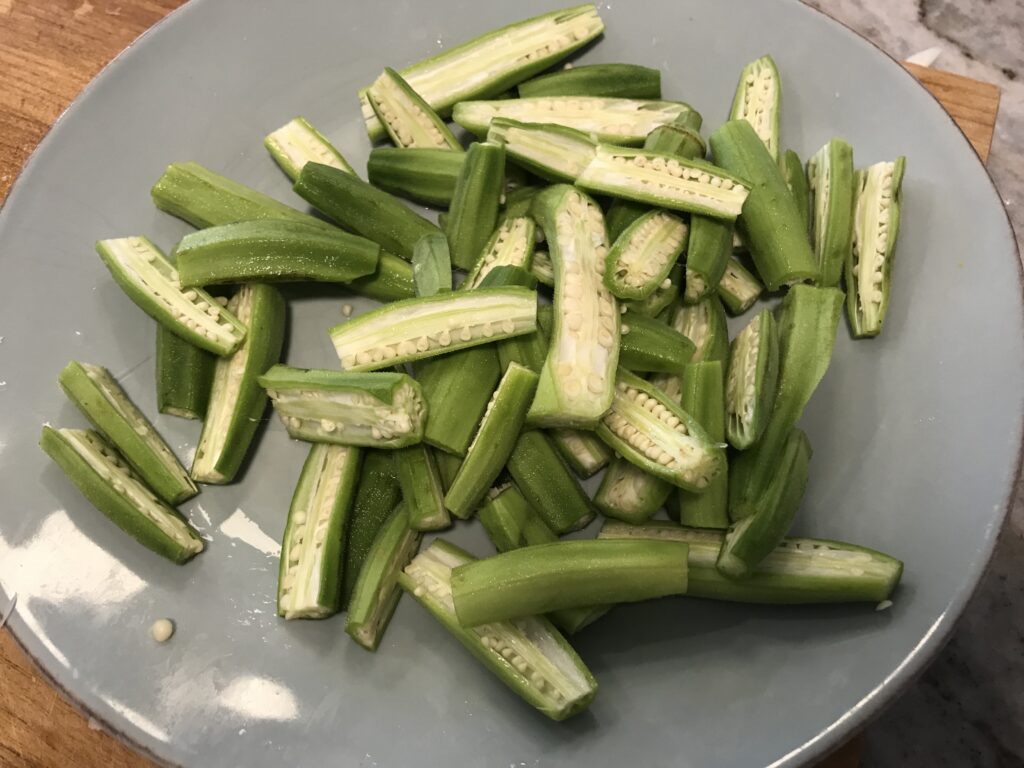
It’s essentially a spicy stew of chicken with red palm oil, okra, squash, and spicy peppers.
Next to it can be rice, but more traditionally would be funje (also spelled funge). This one is not as easy for newbies to digest. It’s very simple but not very flavorful. Cassava flour is mixed with water and baked until a gummy porridge is formed. It is not seasoned. Not even with salt.
It’s not overly appetizing, but an important part of the diet and really not too offensive. The texture and lack of flavor takes a little getting used to, but that is why there is a spicy stew seeping its way into the starch.
SPECIAL INGREDIENTS
I am very lucky to live where I do as I can find almost any ingredient I need for this adventure (assuming it is available in the States).
I was able to pick up all of these items at a local African grocery in New Jersey called Foua African Market. It’s pretty small but impeccably clean and the employee was super helpful. Highly recommend it if you’re nearby and looking for these ingredients.
Red Palm Oil
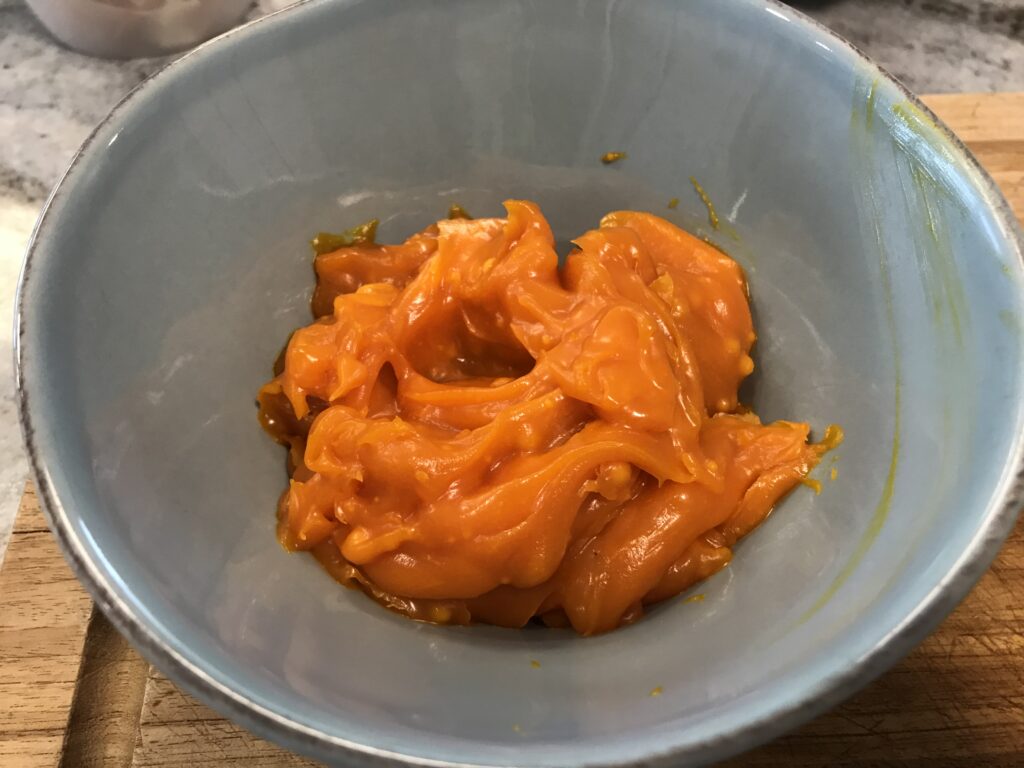
I know I am going to make use of this again on this journey. Red Palm Oil s as important to western and central African cuisine as butter is to the French. And it’s probably just as fattening.
And like most fats, there’s lots of controversy around this. There are both warnings, like contributing to high cholesterol, and proclamations of health benefits with red palm oil, including reducing risks of cancer and adding to heart health.
There are also some environmental concerns about the production of red palm oil, especially in Southeast Asia. In order to meet demand of production, forests are being destroyed contributing to global warming and damaging ecosystems.
That means when purchasing red palm oil, you must make sure it’s ethically produced and is RSPO (Roundtable on Sustainable Palm Oil) certified. I recommend the Nutiva brand, which is organic, unrefined, and produced ethically in Ecuador.
Red palm oil is solid at room temperature (or colder) and melts just like coconut oil when heated. It’s difficult to describe the flavor of this bright orange oil. It’s quite rich and has a slight vegetal herbal peppery flavor.
Palm Nut Concentrate (or Sauce Graine or Palm Soup Base)
Now while I’ve tried red palm oil many times at African restaurants around the city, I don’t believe I’ve ever encountered this strange can.
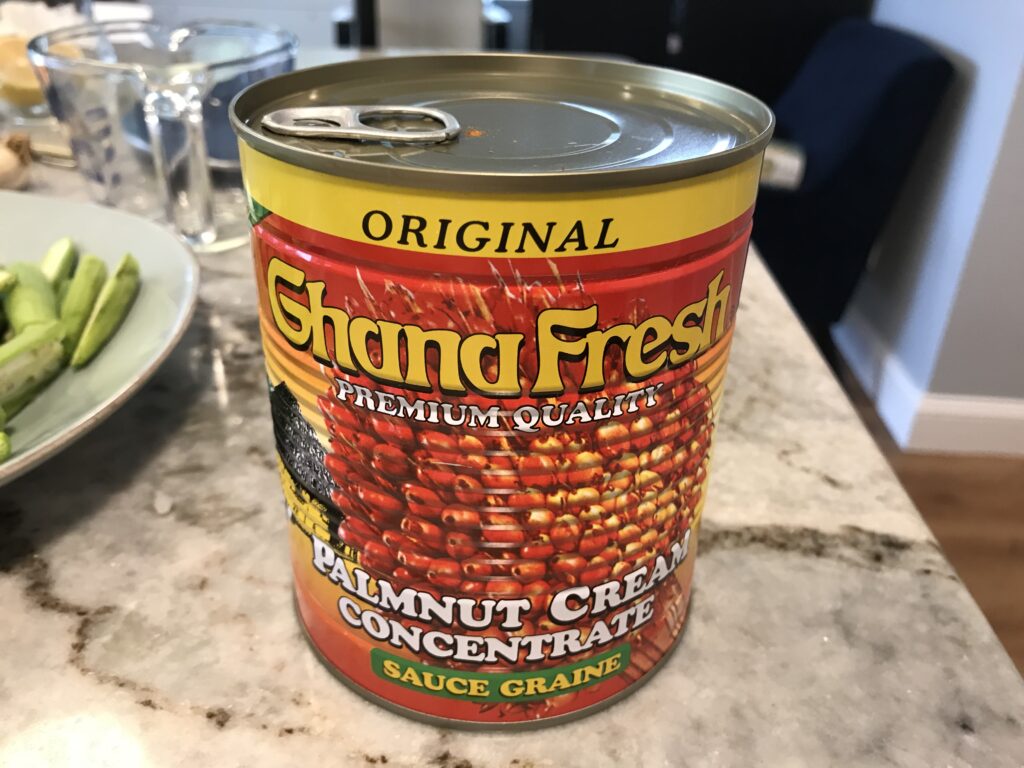
Not all of the recipes I’ve found call for it (I imagine because it is much more difficult to locate in this country) and some substitute chicken stock. But I thought if I could find it, I should make this as authentic as possible.
There is a lot less info online about this ingredient but I believe it is essentially a very rich puree of the palm fruit. Much of Angola is very poor and this high calorie ingredient is very important to many dishes. If you do buy it, I highly recommend not to look at the calorie count. Just give it a try and hope your heart makes it.
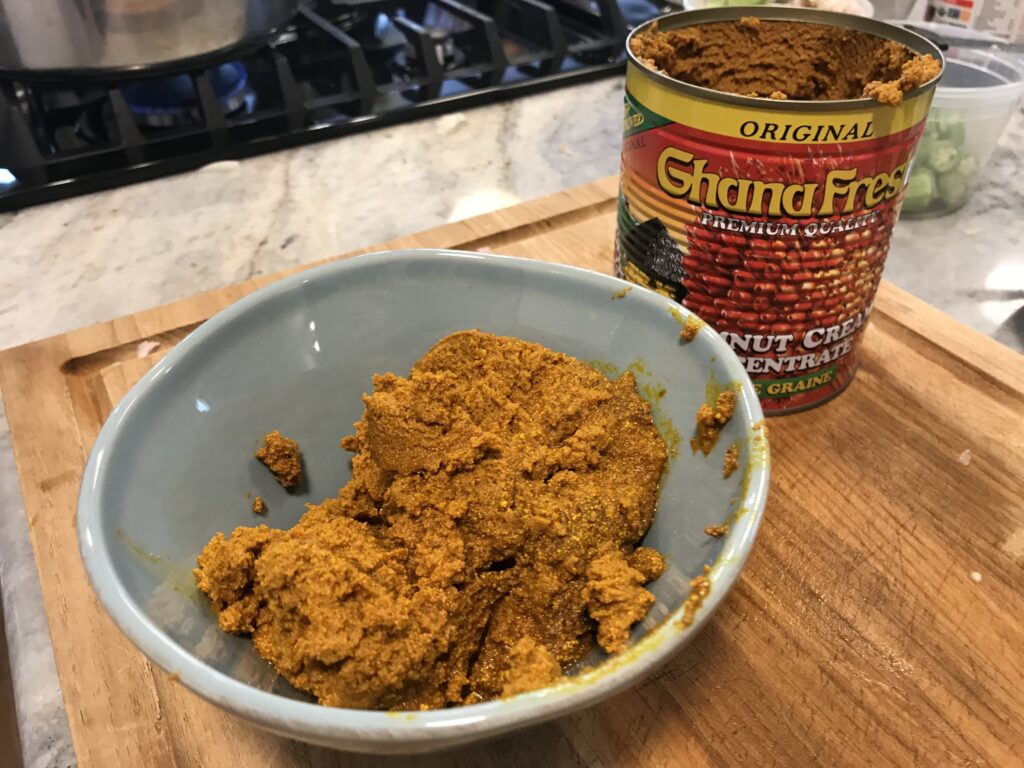
Sam and I did a tasting before putting it in the stew. You should check out the reaction on the video. Essentially Sam thought he liked it and then changed his mind.
It was very creamy and didn’t have an overwhelming flavor. Coconut was the first that came to mind and then I realized it tasted a bit like cooked creamed carrots. I leave it to you to decide if that’s a good thing or not.
Jindungo Pepper
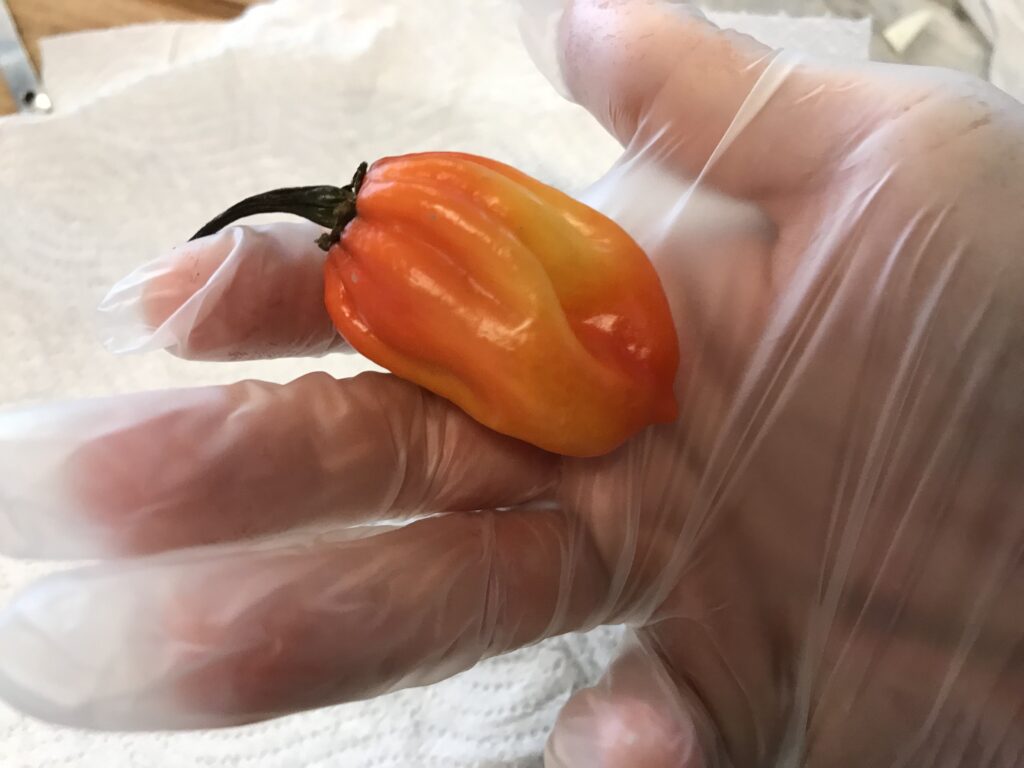
So I actually didn’t find what I was looking for. They didn’t have this pepper at the African market. It’s also known as malagueta in Brazil and piri-piri in Portugal. I thought about searching around for it (there are plenty of Portuguese markets near me), but thought that scotch bonnet pepper would do.
Sam was excited about this meal and I warned him it might be a little spicy. He told me he likes “a little spicy.” I didn’t think scotch bonnets (or jindungo) was appropriate for his first spicy meal, so I left them out of his portion. Funny enough, the spice level for me was rather mild. He probably could have handled it.
THE RECIPE
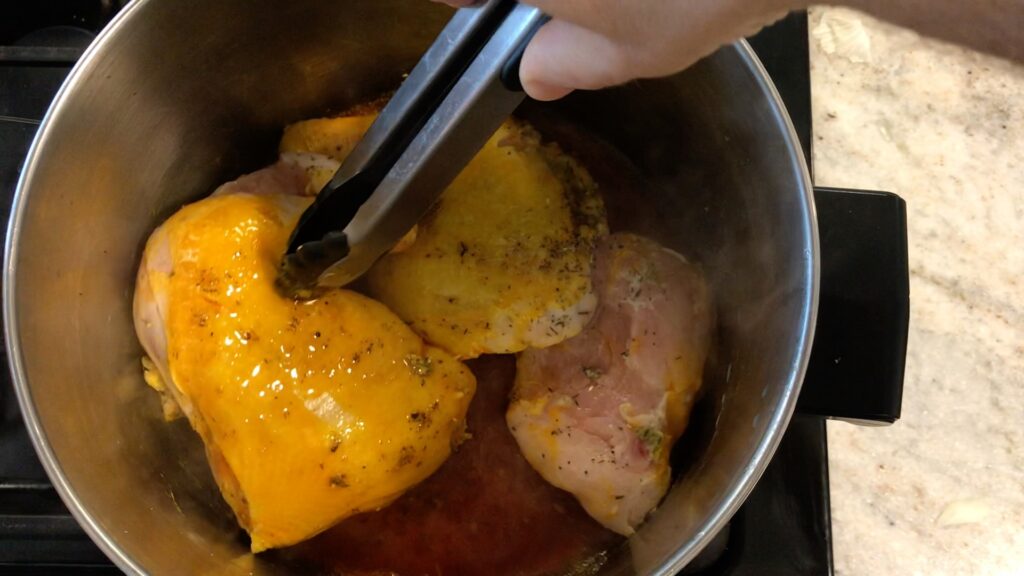
Much like couscous a few weeks ago, here is another case where this dish is popular in many countries in the region. In fact, Muamba de Galinha (or variations of that name) is the national dish of both Gabon and the Democratic Republic of Congo, in addition to Angola, and is popular in both Portugal and Brazil. The recipes vary a bit, for instance peanut is a common ingredient in other countries, but does not seem to appear in the Angolan version.
The Angolan version seems to be more influenced by Brazilian cuisine than the other versions. Some of the ingredients, as mentioned above are difficult to find, but integral for authenticity. If you must leave something out, I’m sure it will still be satisfying – just not 100% Muamba.
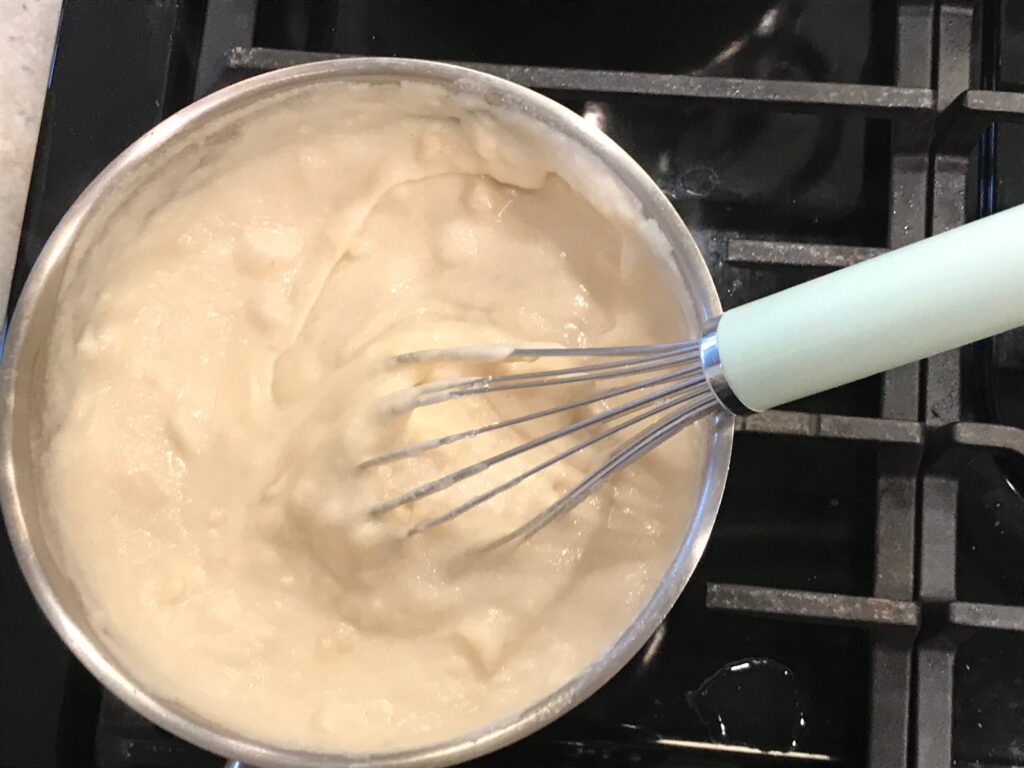
Funje also has many variants, but the most important direction is to whisk for as long as you can. Seriously, prepare for a work-out.
I didn’t mind the consistency and super mild flavor of funje, but I made rice for Sam and my wife as well just in case they weren’t into a gummy cassava porridge (they weren’t).
One thing I did learn is that while you could serve rice or funje with Muamba de Galinha it is not proper to serve both sides together. So I do apologize to Angolans for my lack of etiquette here.
The recipe for the chicken was influenced and adapted from africanbites.com and congocookbook.com. For the funje, I mostly relied on easypurtuguesrecipes.com
Muamba de Galinha from Angola

This is a spicy rich chicken stew that is found around central Africa, but the Angolan version has big influence from Brazilian cuisine and is quite rich with the additon of lots of rib-sticking palm products.
Marinade
- 1 2-3 pound chicken (cut into pieces (can use quarters and breasts))
- 1 lemon (juiced)
- 2 garlic cloves (minced)
- 1/2 tspn thyme (dried)
- 1/2 tspn bouillon cube
- 1 tspn salt
- 1 tspn white pepper
- 1/2 tspn black pepper
- olive oil
Stew
- 1 cup red palm oil
- 3 onions (chopped)
- 3 garlic cloves (minced)
- 3 tomatoes (quartered)
- 1/2 tspn paprika
- 1 jindungo (piri-piri, malagueta) or scotch bonnet pepper
- 1 cup palm nut cream concentrate (or if not available, chicken stock) (also known as palm soup base, sauce graine, or palm butter)
- 15-20 okra (halved)
- 1 butternut squash (cut into cubes)
Marinate
-
Rub chicken with lemon juice, garlic, thyme, bouillon, salt, white pepper, and black pepper. Drizzle with olive oil and marinade in the refrigerator for 30-60 minutes.
-
This step can be skipped if pressed for time.
Stew
-
Melt red palm oil in a big pot or Dutch oven over high heat. When heated, add chicken and turn to coat and brown on each side. About 4-5 minutes.
-
Add onions, garlic, tomatoes, paprika, and pepper pierced with a knife to release heat. Stir well and cook for 3 minutes.
-
Add 2 cups of water and bring to boil. Lower heat to medium and simmer for about 30 minutes.
-
Add butternut squash and cook for another 15 minutes.
-
Then add palm nut concentrate (if using, otherwise sub chicken stock) and okra. Simmer for another 5 minutes or so until okra is tender. Add salt and pepper if necessary. Serve with funje or rice.
Funje from Angola

Not everybody's favorite side dish, but it is a must when it comes to Angolan cuisine. Funje is a very mild but gummy combination of cassava flour and water that is best served aside spicy sauces or stews like Muamba da Galinha.
- 4 cups water (separated into 2 cup bowls)
- 1/2 pound cassava flour
-
Preheat oven to 355° F.
-
Beat cassava flour into 2 cups of cold water until mixture starts to thicken slightly.
-
Boil 2 more cups of water. Once boiling, add cassava-water mixture and continue stirring well. Stir until mixture is smooth.
-
Cover the pot and put it into oven. Bake for 45 minutes or until thickened to a dough-like consistency.
HOW I SCREWED IT UP
It actually came out pretty well, I think. I’m not completely sure what funje is supposed to be like, but I think this was it. If anything, I might have thickened it up too much. Not sure. There’s actually a good chance I’ll have a second crack at it since it is popular in other countries in Africa and elsewhere.
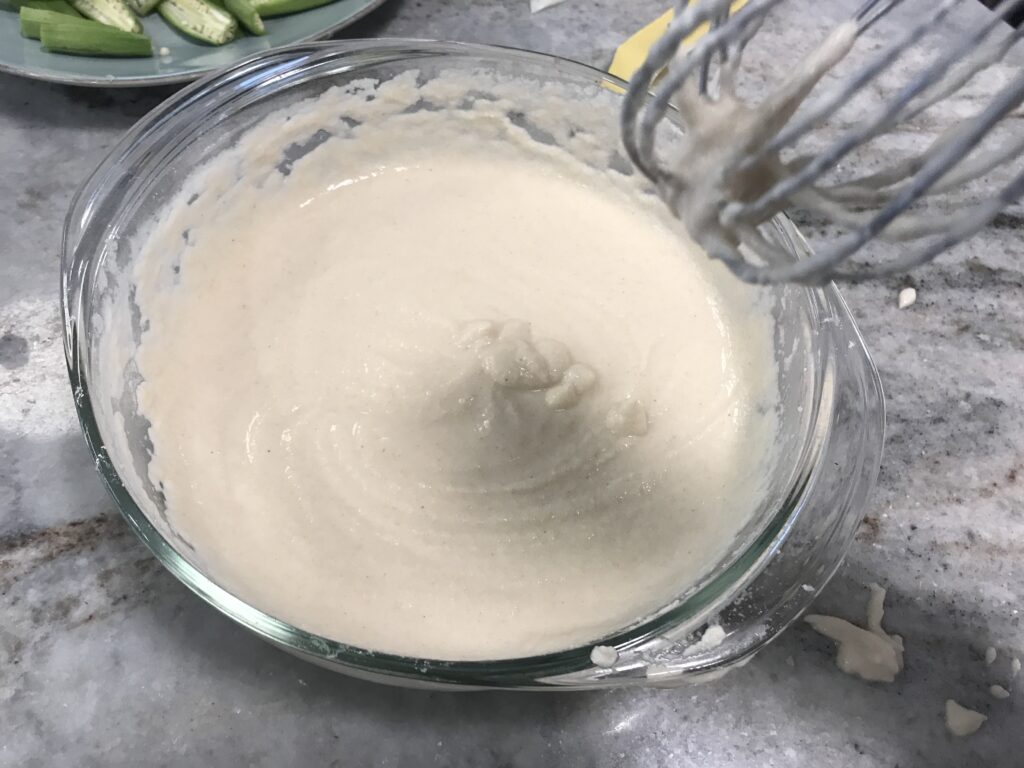
Funje is not something I will seek out on a regular basis. It really illustrates the poverty levels and need for sustenance in a place like Angola. And I think it’s important for us to try and understand it. That being said, it wasn’t a big hit at the table.
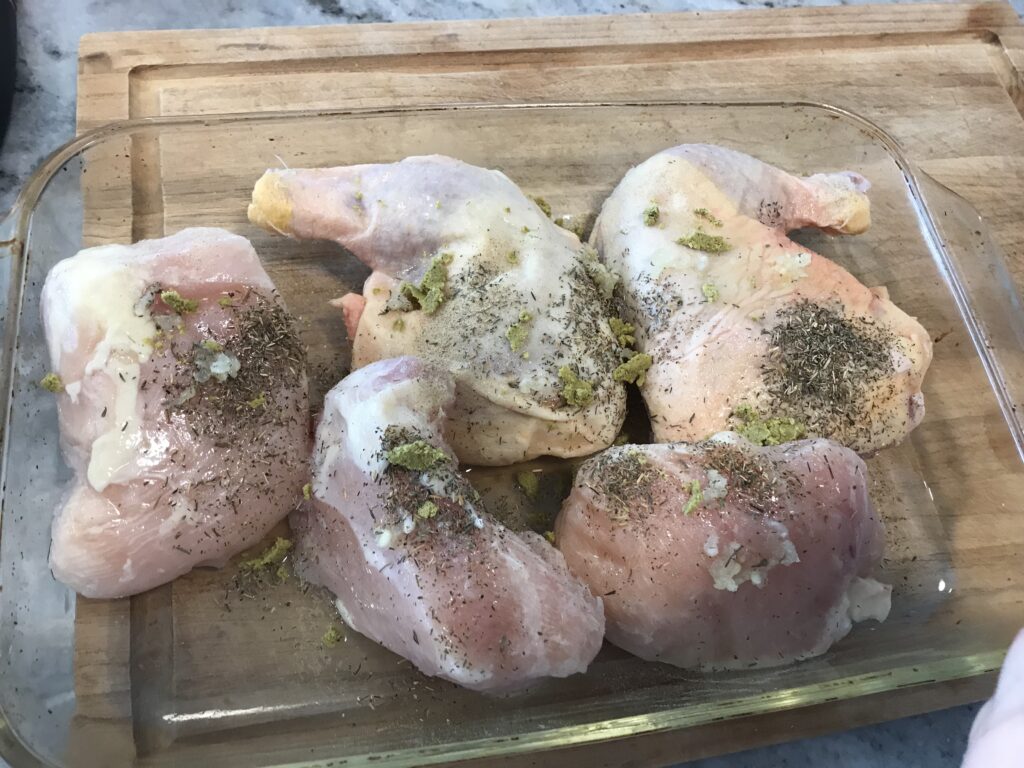
The chicken, on the other hand, was very good. Sam especially loved the flavor and the tenderness. I left the chili pepper out of his pot so he didn’t feel the heat.
And actually, we didn’t either. That was the big screw-up here was that the heat didn’t show up. I think I was so timid with the pepper (I just pierced it quickly with a knife and didn’t stir it in too strongly) that the flavor was not fully released.
So much for bringing the heat this week.
SAM’S REACTION
Sam was actually a bit excited about the idea of spicy food. He once had a Japanese snack that was labelled spicy (it wasn’t) and has since convinced himself he is a spice fiend.
That’s not exactly true. He says he likes “little spicy”. I was using scotch bonnet peppers so didn’t want to betray my son. I made a separate chicken for him without the heat.

And he loved it. He even did a little “hurray!” hand motion as he ate the chicken. That might be the best compliment of my cooking career.

As for the funje he worked so hard at whisking up, he took one look at it and wouldn’t even give it a try. Oh, well. One out of two ain’t so bad.
NEXT WEEK
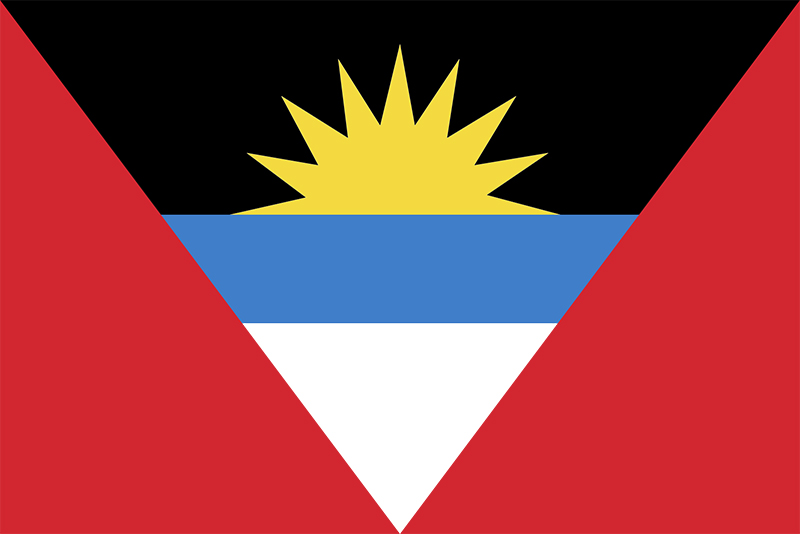
Even the flag of our next country hints at the possibility that we might get a much needed vacation when we head down to these Caribbean islands. The flag of Antigua and Barbuda advertise the sun, sea, and sand.
I only wish we could really experience some of that right now. A traditional Antiguan breakfast is the closest we can come so next week, we’ll be doing breakfast for dinner. Has anybody been to Antigua and Barbuda? Care to share any memories for us all to dream about?

